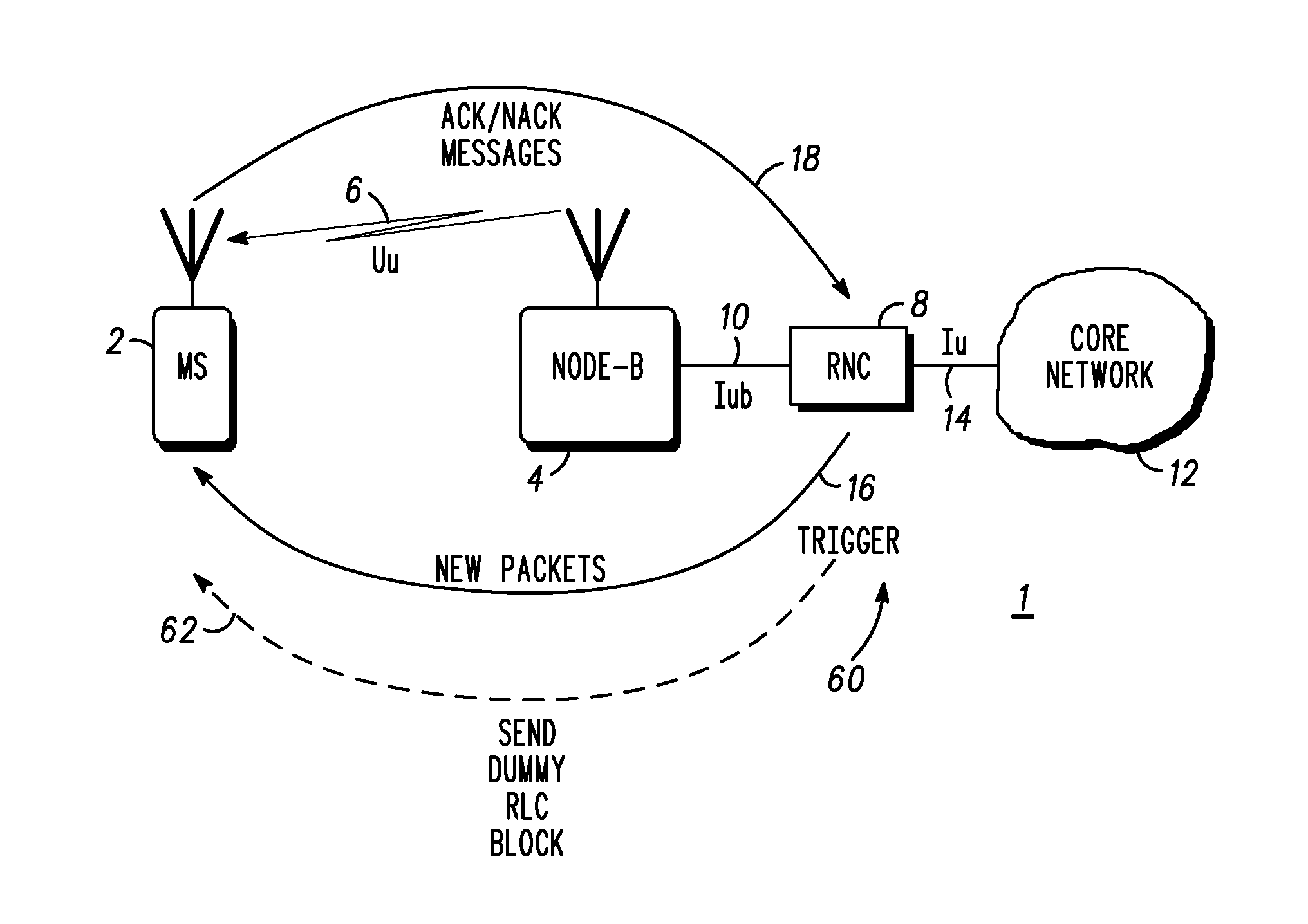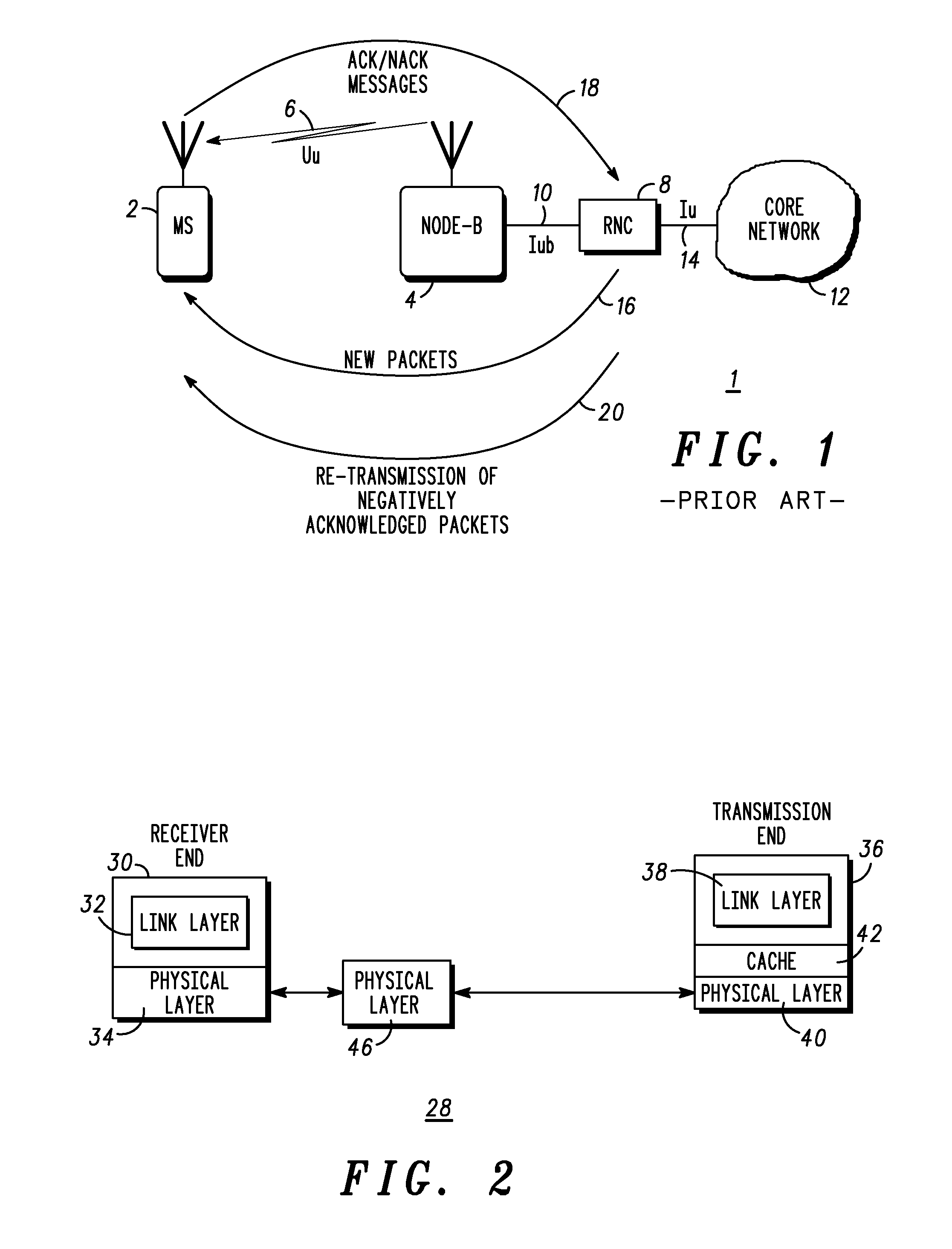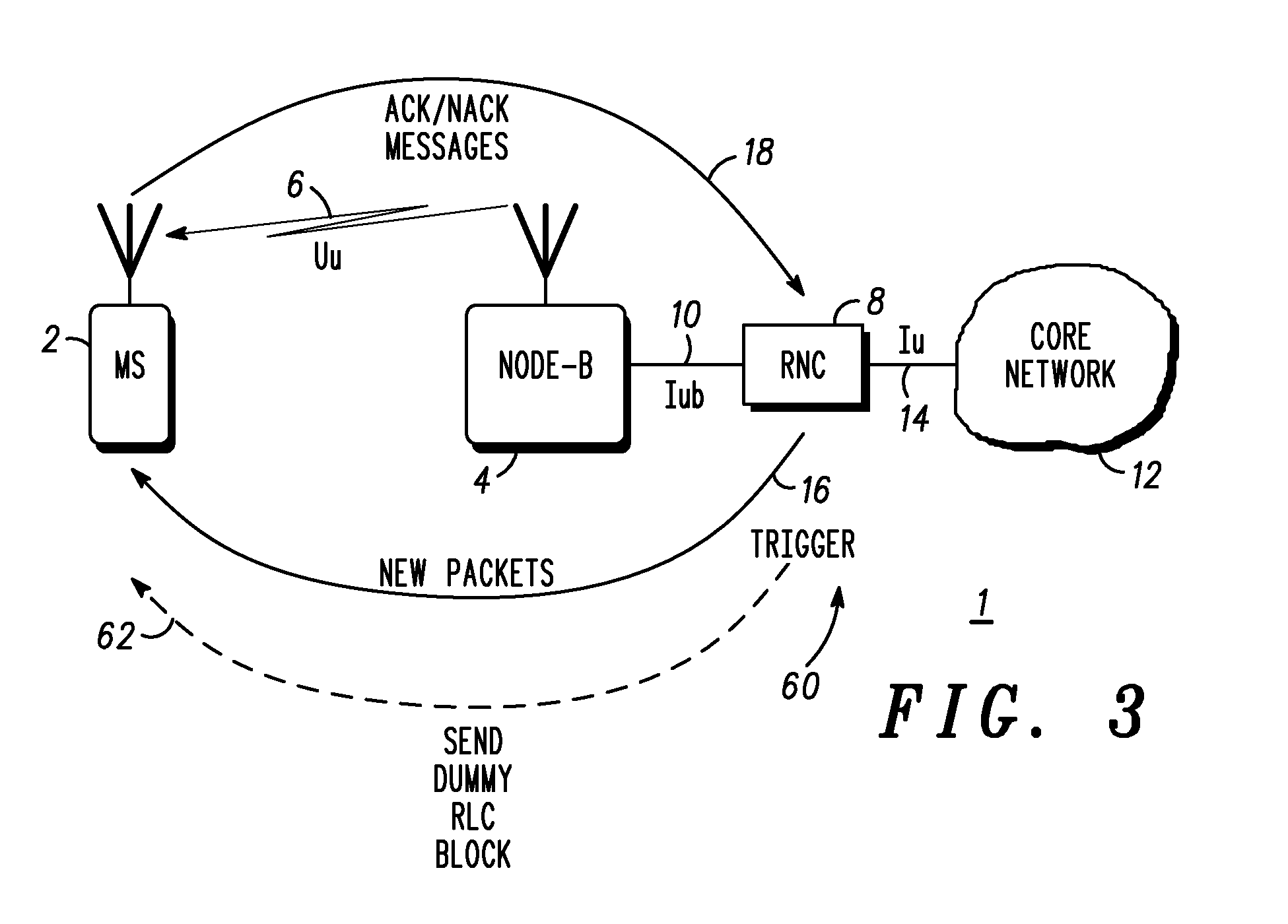Optimised packet data transmission protocol in a communication system employing a transmission window
a transmission window and packet data technology, applied in the field of transmission and retransmission of packet data, can solve the problems of high error rate of wireless networks, low degree of packet error or loss tolerance, and inability to meet qos guarantees, so as to increase the likelihood of meeting qos guarantees
- Summary
- Abstract
- Description
- Claims
- Application Information
AI Technical Summary
Benefits of technology
Problems solved by technology
Method used
Image
Examples
Embodiment Construction
[0029]The following description focuses on embodiments of the invention applicable to a cellular communication system providing real-time services utilizing GPRS. However, it will be appreciated that the invention is not limited to this application but may be applied to many other cellular communication systems utilizing services that may be adversely affected by transmission delays.
[0030]In general, this invention may be applied to a cellular communication system according to the Universal Mobile Telephone Standard (UMTS). The parts of such a communication system 1 which are helpful for understanding this embodiment are illustrated schematically in FIG. 1, for example. A user equipment such as mobile station (MS) 2, for use by an end-user, is coupled with a base transceiver station, known in UMTS as a Node-B, 4, via a radio link 6 operating according to the UMTS-specified Uu interface. The Node-B 4 is coupled to a Radio Network Controller (RNC) 8 via a physical link (e.g. a landlin...
PUM
 Login to View More
Login to View More Abstract
Description
Claims
Application Information
 Login to View More
Login to View More - R&D
- Intellectual Property
- Life Sciences
- Materials
- Tech Scout
- Unparalleled Data Quality
- Higher Quality Content
- 60% Fewer Hallucinations
Browse by: Latest US Patents, China's latest patents, Technical Efficacy Thesaurus, Application Domain, Technology Topic, Popular Technical Reports.
© 2025 PatSnap. All rights reserved.Legal|Privacy policy|Modern Slavery Act Transparency Statement|Sitemap|About US| Contact US: help@patsnap.com



